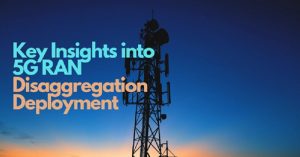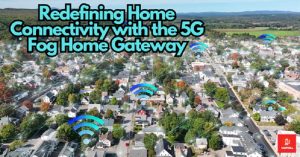Härbärge and Nätverksanslutning with RF Drive Test Software & Indoor coverage walk testing

In the past, our homes were filled with various technologies to meet different needs. We relied on separate devices like phones, internet connections, TVs, and more. This setup often included a DSL modem, a router, a base for cordless phones, and a cable box. However, today’s home technology landscape is changing, and many services are now integrated into a centralized cloud-based system. While this cloud structure offers many benefits, the current home gateway primarily focuses on providing basic internet access. So, now let us see the 5G Fog Home Gateway along with User-friendly LTE RF drive test tools in telecom & RF drive test software in telecom and User-friendly Best wireless site survey software, site survey tools for wireless networks & Indoor cellular coverage walk testing tool in detail.
The Role of 5G and Cloud Computing
A cloud-centered design offers several advantages, including the ability to scale services easily, dependability, and flexibility. For instance, services that let you pay only for what you use are very popular. However, this approach has its downsides. It often overlooks the need for quick access to services and forces all requests through a central service interface. As a result, data needs to be sent to the cloud for storage and processing, which can lead to problems with speed, privacy, network traffic, and energy use.
This is where fog computing comes into play. Fog architecture complements cloud computing by extending its capabilities down to end devices in your home. It allows for the dynamic distribution of tasks from the cloud to more capable devices that can process information locally. With the introduction of 5G technology, which offers high capacity and low latency, home gateways can effectively connect to both the cloud and local edge devices. This positions the 5G Home Gateway as a powerful platform for local services.
Smart Services at Home
As 5G becomes more integrated into home systems, we can expect home services to become “smart.” This means they will interact with users through voice and be aware of their surroundings. The home gateway will act as a central control point for various devices, including sensors and media systems.
The Importance of Machine Learning
Machine learning is rapidly evolving, with significant improvements in areas like speech recognition, language translation, and image classification. These advancements are beginning to reach human-level performance. As machine learning becomes a bigger part of home services, it will transform how we interact with technology.
For example, using voice-activated assistants like Amazon Echo or Google Home, users can easily control their devices. Features like facial recognition and sound detection can also improve home security.
Cloud-Based Machine Learning Services
Currently, many home machine learning services operate from the cloud. These systems rely on extensive computing resources, large training datasets, and powerful processors. Devices send raw data to the cloud for analysis and receive the results back. While this method works, it can raise concerns about privacy and increase latency.
By using a fog-based machine learning model, we can enhance privacy and reduce delays by processing tasks locally. However, there are challenges, like figuring out how to distribute tasks and boost the processing power of home gateways. An example of efficient resource use is Tesla’s implementation of NVIDIA’s Drive PX 2, a supercomputer installed in its vehicles.
Machine Learning on Home Gateways
The main concept is to find a balance between the accuracy of machine learning results and the available resources. Home gateways can run machine learning services by using pre-trained models that are adjusted with local data. Additionally, compressing these models can allow for effective machine learning operations on devices with limited resources.
Moving Toward Distributed Home Services
The fog model can serve as a bridge to a more distributed, peer-to-peer service system. This setup allows for flexible movement of functions across different layers of technology. It could also enable automatic transactions between service providers and users, reducing the need for human involvement. For instance, a washing machine could monitor its supplies and request a repair when needed.
The Role of Blockchains
They help maintain a public ledger that is tamper-proof, ensuring the integrity of data through cryptographic techniques.
Smart Contracts on Ethereum
Ethereum blockchain technology allows for the storage of basic programs called smart contracts. These contracts facilitate various applications and have gained support from major companies like Microsoft, which offers tools on Azure.
Challenges of Blockchain in Home Gateways
For blockchains to function effectively, a full node needs to verify the blockchain’s current state using local resources. Additionally, consensus algorithms, like proof of work or proof of stake, require significant computing power, which is often beyond the capabilities of a standard home gateway. Currently, many devices operate using a client/server model, where they connect to external nodes to validate transactions.
Enabling Blockchain on Home Gateways
To effectively use blockchains, we can operate on a partial view of the blockchain. Blockchains utilize a structure called Merkle Trees, which efficiently verify the presence of data within the blockchain. A separate protocol can be used to download necessary information on-demand from a full node, such as the Light Ethereum Subprotocol. This ensures a high level of security while allowing local verification of transactions.
Requirements for Home Gateways
For a home gateway to function effectively, it needs enhanced computing capabilities. This includes multi-core CPUs, dedicated graphics processing units (GPUs), and security accelerators. Additionally, it should have robust communication options like WLAN, Bluetooth Low Energy (BLE), and support for protocols like Thread and 802.15.4.
Software requirements are equally important. The gateway must support the isolation of multiple service components and allow for the dynamic loading and unloading of these services, potentially by outside providers. Solutions like Eclipse Kura or OpenHAB can help manage these components effectively.
Embracing Virtualization and Containerization
A successful home gateway will also need to fully virtualize and containerize its software components. This includes lightweight operating system images and support for easy software updates. Using tools like Docker and Kubernetes can facilitate better management of these containers.
The Future of 5G Home Gateways
By working together, multiple 5G Home Gateways can create a strong and flexible service platform. They can support new communication services while leveraging context information and machine learning to enhance user experiences. This collaboration can lead to better management of local wireless resources, sharing of network infrastructure, and efficient video caching.
With all these advantages and the ongoing technological developments, 5G Home Gateway services can represent a significant business opportunity for operators globally. As we move forward, the integration of 5G, fog computing, and advanced technologies will reshape our home environments, making them smarter and more responsive to our needs.
About RantCell
RantCell is a robust mobile application that simplifies network testing, monitoring, and reporting. It provides instant insights into important network performance metrics, including signal strength, download speeds, and latency, all accessible directly from your smartphone. Designed for telecom operators and businesses, RantCell features an intuitive interface and a cloud-based platform that facilitate improved network quality. By removing the necessity for expensive testing devices, RantCell offers versatility for both urban and rural settings, guaranteeing dependable testing wherever you are. Also read similar articles from here.






